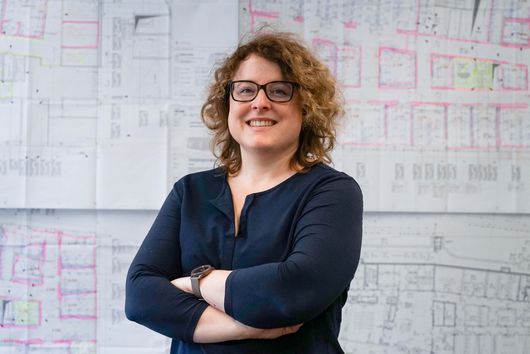
Behind the scenes of science
Why an open doors policy is essential
If you were to ask Alice Hohn what scientists need to be able to work, you would get a short but definite answer: “Enough space,” the head of administration remarks jokingly, but hinting at the truth. The Helmholtz Institute for RNA-based Infection Research (HIRI) is currently housed on the university's premises until the construction of its own building is completed. “But it is becoming increasingly cramped for HIRI’s employees”, Alice Hohn says.
Since its foundation, the HIRI has grown substantially. In the beginning, the institute employed twelve people. More than 100 people are now working at the HIRI. Everyone is eagerly awaiting the new building. After its completion, the new institute building will accommodate around 120 researchers on approximately 4,200 square meters of floor space and offer optimal research conditions. A modern infrastructure will be created with laboratories, seminar and meeting rooms, as well as numerous open communication and work areas to facilitate scientific exchange. “Outstanding research needs a well-functioning administration,” Alice Hohn says. “Behind the scenes, we ensure that everything runs smoothly, so that our scientists can do what they are really passionate about: research.”
“Behind the scenes, we ensure that everything runs smoothly, so that our scientists can do what they are really passionate about: research.”
Alice Hohn
Handling general administrative processes, press relations, IT matters and facility services as well as research and laboratory management, the HIRI administration is a true all-rounder. The key is to be always flexible and to act quickly. For example, the team may be required to provide advice and assistance when it comes to preparing official documents for local authorities, organizing childcare, or finding an apartment.
“We have a strong ‘can-do’ spirit. We are a small but well-coordinated team of all ages,” says Alice Hohn. The HIRI is not only training the next generation of researchers but meanwhile also an IT apprentice. Those who do not want to start an apprenticeship or enroll at a university right after school, can do a voluntary year in science at the HIRI. These volunteers provide support to the administration and have the opportunity to gain insight into working in a laboratory.
At the HIRI, research and administration fit seamlessly together. One reason is that the doors are always open and the distances are short, although not in the truest sense of the word: the corridor that connects all offices and labs is 160 meters long. Here, the HIRI scooter provides a solution—and, of course, the scooter will be moving into the new building as well.






